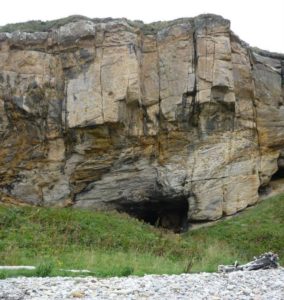 During the late Bronze Age, the cave appears to have been a repository for precious objects, with finds ranging from bronze bracelets via pottery to a swan’s neck pin. Large quantities of human remains have also been discovered – especially those of children – suggesting that the cave may have been a centre for funerary rites. Intriguingly, on the frontal bone of one child, there is evidence suggestive of deliberate defleshing. Some of the cave’s most important features, however, are the Pictish symbols that can be found on the walls of its entrance passages.
During the late Bronze Age, the cave appears to have been a repository for precious objects, with finds ranging from bronze bracelets via pottery to a swan’s neck pin. Large quantities of human remains have also been discovered – especially those of children – suggesting that the cave may have been a centre for funerary rites. Intriguingly, on the frontal bone of one child, there is evidence suggestive of deliberate defleshing. Some of the cave’s most important features, however, are the Pictish symbols that can be found on the walls of its entrance passages.
Problematically, the cave is only accessible at low tide, making investigation of the interior time-sensitive. A new project, funded by Historic Environment Scotland and carried out by Professor Ian Armit and Dr Lindsey Büster at the University of Bradford, has created a high-resolution animated model of the cave.















